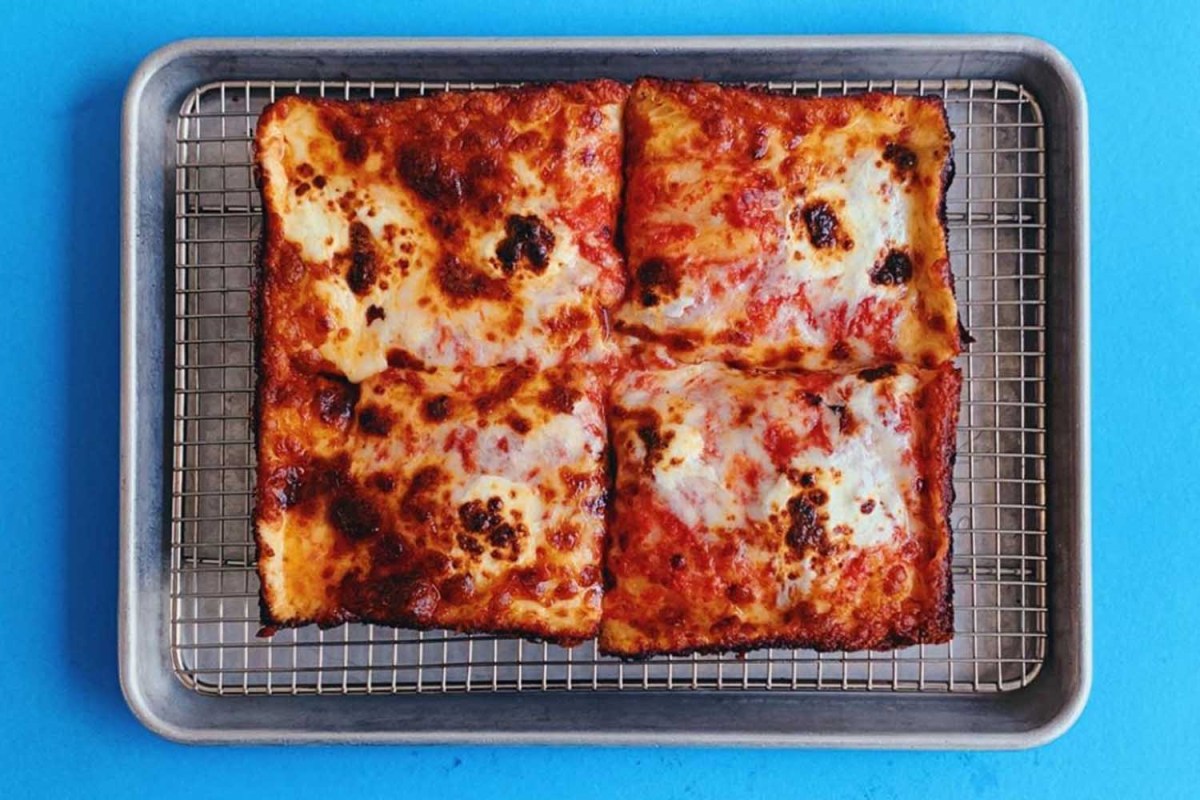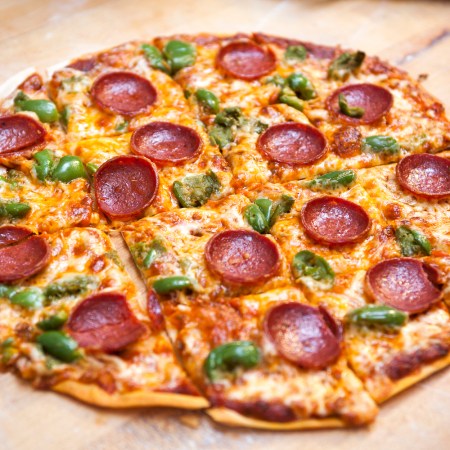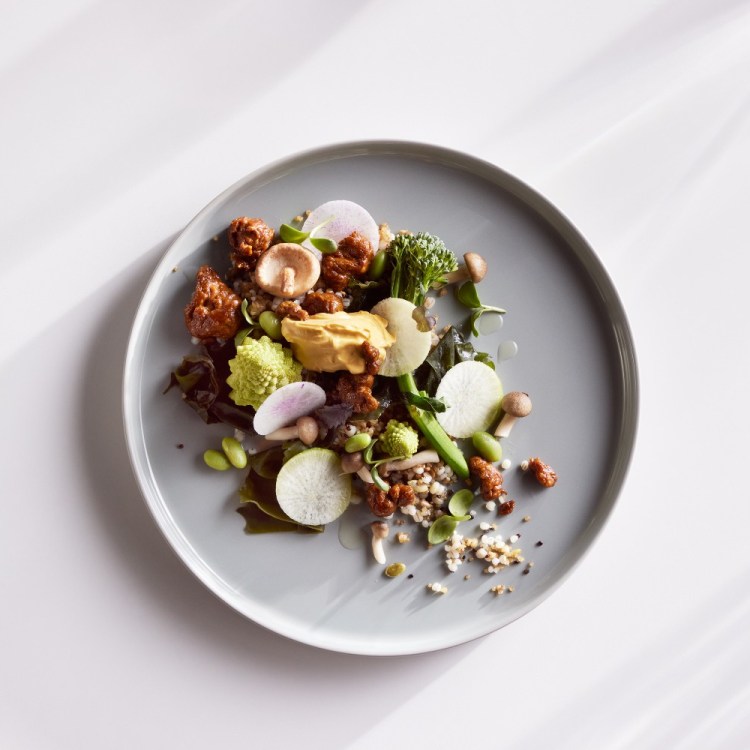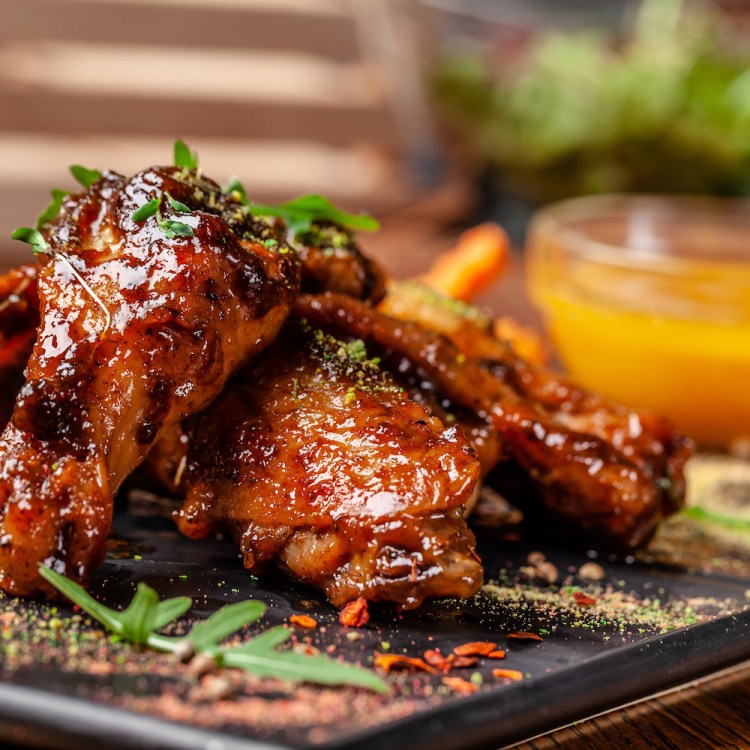San Francisco’s Square Pie Guys are busy. Deemed an essential business amid Stay at Home order, they’re doing all they can to keep up with intense demand for their pizzas while simultaneously supporting our healthcare workers.
“We’re doing well,” says Marc Schechter, “Chief Pizza Officer.” “It’s been amazing to feel the support of our community here in S.F., both for our biz and in donating to our GoFundMe to provide meals to healthcare workers in S.F.” (So far, they’ve raised over $5,000 to cover for pizza-centric meals for healthcare workers.)
They’re not done with their good deeds of the week — here, they share a recipe for pizza dough, easily prepared at home. See below for directions and ingredients — as well as Schecter’s tips and tricks for a superior home-cooked pizza.
Makes: 3 pan pizzas or 5 small round pies
Ingredients
5 cups flour
2¾ cup water
Roughly half a packet of yeast
½ tablespoon salt
½ tablespoon oil
Making the dough
Combine flour and yeast in a large bowl. Add the water in slowly and mix by hand until incorporated (no dry flour in the bowl). If you’re using a KitchenAid or food processor, mix on low speed for 3 to 5 minutes
Add the salt and continue to mix by hand while kneading and folding the dough until the salt is well mixed. Add the olive oil slowly and repeat the same steps (mix, knead fold). For the kitchenaid mix on low, until the mixture forms a ball that rides around the bowl.
Cover the dough with plastic wrap and let it sit out a room temp for 30 mins to one hour (or until the dough doubles in size). Punch the dough back down (push all the gas out until it goes back to roughly its original size, or thereabout).
Cover the bowl again with plastic wrap and let it ferment in the fridge for 1 or 2 nights (depending on when you want to make pizza).
Making your pizza
In the morning, portion your dough mass into 200 gram balls or 3 equally sized balls (if you don’t have a scale). This is for round pies (try using YouTube to find a video on balling dough).
For pan pizza or cast-iron pizza: Divide the dough into 2 equal pieces and then put them in a well-oiled pan. Let the dough come to room temperature for about an hour, and then press it out to the edges of your pan. Wrap it in plastic wrap and place it back in the fridge to cook that night for dinner. Or you can leave it out for 2 -3 hours and then bake it.
Ingredients
Great pizzas start with simple great ingredients. We’ve found that Whole Foods offers some solid pizza ingredients. Their fresh mozzarella is great along with their shredded low moisture mozzarella. The ones here in San Francisco also carry Bianco Dinapoli
Baking the Pie
Pre-heat your oven to its highest setting for at least 30 minutes to an hour before you’re ready to bake. Ideally you’ll own a pizza stone or steel — if not you can cook your pie on a sheet pan.
And a Few Indispensable Pro Tips
1. Planning: You can absolutely make the dough and eat it the same day, but if you plan at least one day in advance, you’ll allow the dough to ferment properly, and it’ll be easier to stretch and work with.
2. Use bread flour if you can (obviously there is a shortage of flour right now and people shouldn’t go out of their house if they don’t need to). Bread flour has a higher percentage of protein, which forms stronger gluten bonds and makes the dough stronger and easier to stretch.
3. You don’t need to cook your sauce! If you buy a nice can of crushed San Marzano tomatoes you can put that right on the pie. You don’t need to use anything too fancy — pizza is all about simple, high-quality ingredients.
4. Use a food scale to accurately weigh and measure the ingredients. If you don’t have one, that’s fine, but if you do, it’ll go a long way towards ensuring a consistent dough.
5. Pan pies are great for the home oven. You don’t need a pizza stone, and you don’t need to know how to stretch a perfectly round thin pizza — plus your pan or cast-iron skillet cooks the dough perfectly.
6. If you’re making a round, thin pie, flour is your friend! Use it liberally to stretch your dough and to launch it in the oven to make sure the pizza slides nicely onto your cooking surface. You can use an overturned cookie sheet to launch your pizza in the oven, and we’ve even had friends use a clean piece of cardboard.
7. Less is more. Pan pie or round thin pie, it’s easy to put too many toppings on your pizza. Remember, less is more. You want to see some tomato sauce under that cheese and you don’t want to load it up with too many toppings. It’s very tempting to put a ton of stuff on your pizza, but it won’t bake correctly, and it won’t look and taste as great as you want it to — trust us.
Join America's Fastest Growing Spirits Newsletter THE SPILL. Unlock all the reviews, recipes and revelry — and get 15% off award-winning La Tierra de Acre Mezcal.


















